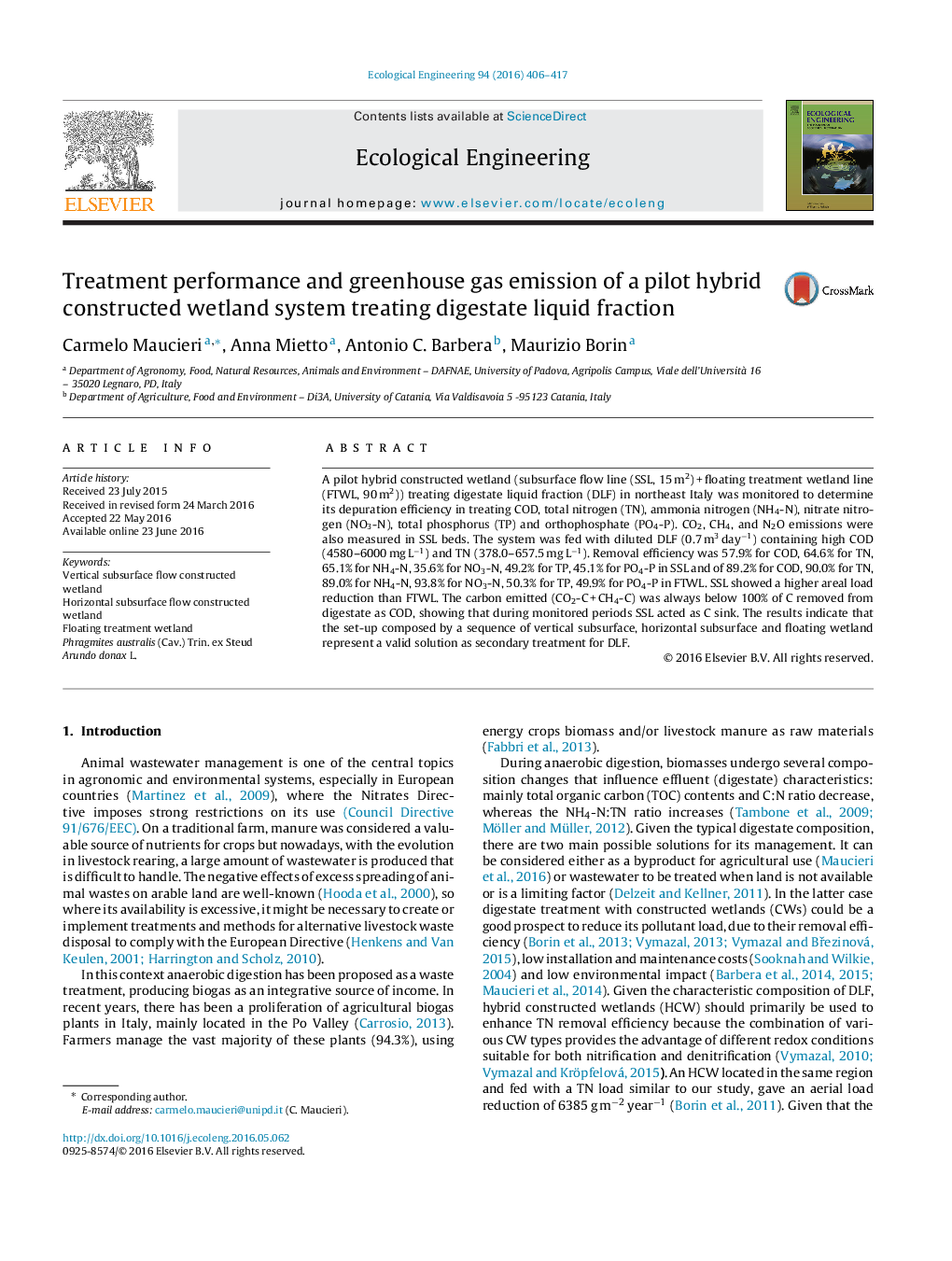| Article ID | Journal | Published Year | Pages | File Type |
|---|---|---|---|---|
| 4388567 | Ecological Engineering | 2016 | 12 Pages |
•Hybrid constructed wetland can represent a valid solution to treat digestate liquid fraction.•Floating wetland treatment showed a good performance under high pollutants load.•The system areal load reduction was 169.0 g m−2 d−1 for COD and 18.1 g m−2 d−1 for TN.•P. australis showed higher COD, TN and NO3-N abatement than A. donax.•Subsurface beds emitted as CO2 and CH4 less than 100% of C removed from digestate acting as C sink.
A pilot hybrid constructed wetland (subsurface flow line (SSL, 15 m2) + floating treatment wetland line (FTWL, 90 m2)) treating digestate liquid fraction (DLF) in northeast Italy was monitored to determine its depuration efficiency in treating COD, total nitrogen (TN), ammonia nitrogen (NH4-N), nitrate nitrogen (NO3-N), total phosphorus (TP) and orthophosphate (PO4-P). CO2, CH4, and N2O emissions were also measured in SSL beds. The system was fed with diluted DLF (0.7 m3 day−1) containing high COD (4580–6000 mg L−1) and TN (378.0–657.5 mg L−1). Removal efficiency was 57.9% for COD, 64.6% for TN, 65.1% for NH4-N, 35.6% for NO3-N, 49.2% for TP, 45.1% for PO4-P in SSL and of 89.2% for COD, 90.0% for TN, 89.0% for NH4-N, 93.8% for NO3-N, 50.3% for TP, 49.9% for PO4-P in FTWL. SSL showed a higher areal load reduction than FTWL. The carbon emitted (CO2-C + CH4-C) was always below 100% of C removed from digestate as COD, showing that during monitored periods SSL acted as C sink. The results indicate that the set-up composed by a sequence of vertical subsurface, horizontal subsurface and floating wetland represent a valid solution as secondary treatment for DLF.
